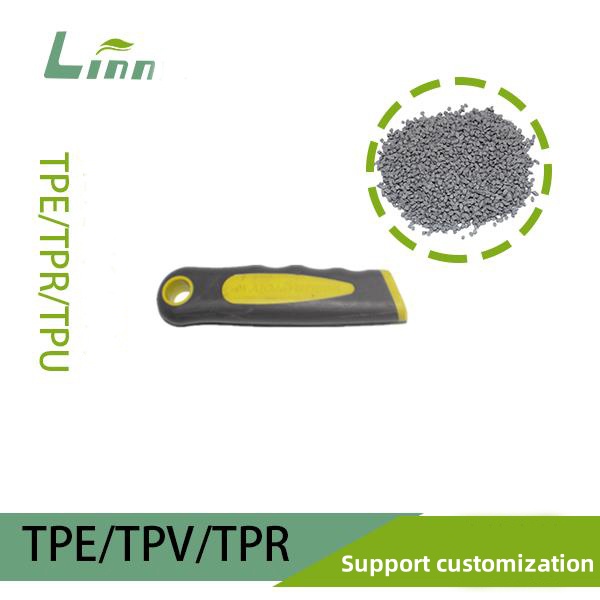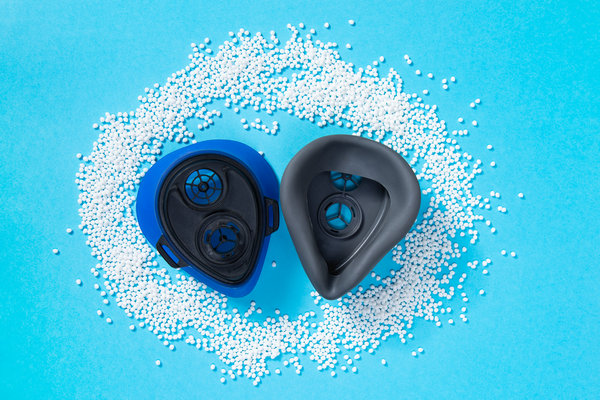As someone who’s spent years in the polymer processing industry, I’ve seen my fair share of challenges with TPR (thermoplastic rubber) pellet cutting, especially in underwater pelletizing systems. When TPR pellets don’t cut cleanly at 30°C water temperature, it’s frustrating—jagged edges, stringing, or clumping can ruin an entire batch. Over time, I’ve learned that this issue often stems from a mix of material properties, equipment setup, and process conditions. Let me walk you through the reasons behind this problem and share practical solutions to get your pelletizing process back on track.

Understanding the Basics of TPR and Underwater Pelletizing
TPR, or thermoplastic rubber, is a versatile material prized for its elasticity, durability, and ease of processing. It’s widely used in everything from shoe soles to automotive parts. Underwater pelletizing, a common method for cutting TPR, involves extruding molten polymer through a die plate into a water bath, where rotating blades slice the material into pellets. The water cools and solidifies the pellets, which are then carried away for drying.
At 30°C, the water temperature is relatively warm for underwater pelletizing, which typically operates between 10°C and 40°C depending on the material. If the pellets aren’t forming cleanly, the issue likely lies in one of three areas: material properties, equipment settings, or process parameters. Let’s break these down.
Material Properties Affecting Cutting Quality
1. TPR Composition and Melt Flow Index (MFI)
The composition of your TPR can significantly impact how it behaves during cutting. TPR is often a blend of polymers like styrene-based elastomers (SBS or SEBS) mixed with oils, fillers, or additives. If the MFI—a measure of how easily the material flows when molten—is too high or too low, it can cause problems. A high MFI might make the material too soft, leading to stringing or smearing during cutting. Conversely, a low MFI can result in a viscous melt that resists clean cuts, causing irregular pellets.
In my experience, TPR formulations with inconsistent or poorly matched MFI for underwater cutting at 30°C can lead to issues. For example, a batch I worked with years ago had an MFI of 10 g/10 min, which was fine for air-cooled cutting but caused clumping in warm water due to insufficient cooling.
2. Tackiness and Elasticity
TPR’s inherent tackiness and elasticity can make it stick to blades or clump together in warm water. At 30°C, the water may not cool the pellets fast enough to prevent surface tackiness, especially for softer TPR grades (e.g., Shore A hardness below 60). This stickiness can cause pellets to fuse or form tails, ruining their shape.
3. Additive Imbalance
Additives like plasticizers or fillers can alter TPR’s behavior. Too much plasticizer can make the material overly soft, while excessive fillers might create brittle spots that fracture unevenly during cutting. I once dealt with a TPR batch where an overzealous addition of calcium carbonate led to inconsistent pellet shapes because the material didn’t flow uniformly through the die.

Equipment-Related Issues
1. Die Plate Design and Condition
The die plate is the heart of the underwater pelletizing system. If the die holes are too large, too small, or worn out, the extruded TPR strands may not form properly. For instance, worn die holes can create uneven flow, leading to irregularly shaped pellets. Similarly, if the die plate isn’t heated uniformly (typically between 180°C and 220°C for TPR), the material may solidify prematurely or remain too molten, affecting cut quality.
I recall a case where a client’s die plate had micro-abrasions from prolonged use. The uneven surfaces caused the TPR to extrude in irregular streams, which the blades couldn’t cut cleanly. Regular inspection and maintenance of the die plate are critical.
2. Blade Wear and Alignment
The cutting blades must be sharp and precisely aligned with the die plate. Dull blades or misaligned cutters can smear or tear the TPR instead of slicing it cleanly. At 30°C, the warmer water reduces the cooling rate, making the material softer and more prone to deformation if the blades aren’t in top condition. I recommend checking blade sharpness every 100 hours of operation and ensuring the blade-to-die gap is within 0.05–0.1 mm for optimal cutting.
3. Water Flow and Turbulence
The water flow in the cutting chamber needs to be laminar to carry pellets away without causing collisions or clumping. If the flow is too turbulent or the water volume is insufficient, pellets can stick together or deform before they solidify. In one factory I consulted for, increasing the water flow rate by 20% and adjusting the inlet angle reduced pellet clumping significantly at 30°C.
Process Parameters to Optimize
1. Water Temperature Control
A water temperature of 30°C is on the warmer side for TPR pelletizing. While it’s not uncommon, it may not provide enough cooling for certain TPR grades, especially softer ones. If the pellets remain too warm after cutting, they can deform or stick together. I’ve found that lowering the water temperature to 20–25°C often improves cut quality, though this depends on the TPR’s glass transition temperature (Tg).
2. Extrusion Rate and Blade Speed
The extrusion rate and blade speed need to be synchronized. If the extruder pushes material too fast, the blades may not keep up, leading to elongated or fused pellets. Conversely, if the blade speed is too high, it can cause smearing. A good rule of thumb is to match the blade speed to produce pellets with a diameter of 2–4 mm. For a TPR with a moderate MFI (e.g., 5–15 g/10 min), I typically start with a blade speed of 800–1200 RPM and adjust from there.
3. Polymer Temperature
The temperature of the molten TPR entering the die plate is crucial. If it’s too high (e.g., above 220°C for most TPRs), the material may remain too soft, leading to stringing. If it’s too low, the material can solidify prematurely, clogging the die or causing irregular cuts. I always recommend monitoring the melt temperature with a thermocouple and keeping it within 190–210°C for most TPR grades.

Practical Solutions to Improve Cutting Quality
Based on the issues above, here are actionable steps to address poor TPR pellet cutting at 30°C water temperature:
|
Issue |
Possible Cause |
Solution |
Expected Outcome |
|---|---|---|---|
|
Stringing or Tailing |
High MFI or excessive melt temperature |
Lower melt temperature to 190–210°C; check TPR formulation |
Cleaner cuts, reduced stringing |
|
Irregular Pellet Shapes |
Worn die plate or dull blades |
Inspect and replace die plate; sharpen or replace blades |
Uniform pellet size and shape |
|
Pellet Clumping |
Warm water or tacky TPR |
Lower water temperature to 20–25°C; increase water flow rate |
Reduced clumping, better pellet separation |
|
Uneven Cuts |
Misaligned blades or uneven die heating |
Adjust blade alignment; ensure uniform die plate heating (180–220°C) |
Smoother, consistent cuts |
Step-by-Step Troubleshooting Guide
Check Material Properties: Request a detailed spec sheet from your TPR supplier, focusing on MFI, hardness, and additive content. If the MFI is above 15 g/10 min, consider switching to a lower-MFI grade or adjusting the process.
Inspect Equipment: Examine the die plate for wear or blockages and ensure the blades are sharp and properly aligned. A quick test is to run a small batch and observe the extrudate shape before cutting.
Adjust Process Parameters: Start by lowering the water temperature to 25°C and monitoring the results. If clumping persists, increase the water flow rate. Fine-tune the blade speed and extrusion rate to match the pellet size you need.
Test and Iterate: Run small batches after each adjustment and document the results. This methodical approach helped me solve a similar issue at a plant where pellets were consistently misshapen due to a high extrusion rate.
Real-World Example
A few years back, I worked with a manufacturer struggling with TPR pelletizing at 30°C. Their pellets were clumping and had irregular edges, causing downstream issues in injection molding. After reviewing their setup, we found the TPR had a high MFI (20 g/10 min), and the water flow was turbulent. We lowered the water temperature to 22°C, increased the flow rate, and switched to a TPR grade with an MFI of 10 g/10 min. Within a day, the pellet quality improved, and clumping dropped by 90%. This experience taught me the importance of matching material and process conditions.

Preventive Measures for Consistent Results
To avoid future issues, I recommend the following:
Regular Maintenance: Schedule die plate and blade inspections every 100–200 hours of operation. Replace worn components promptly.
Material Consistency: Work closely with your TPR supplier to ensure consistent formulations. Request batch testing if you suspect variability.
Process Monitoring: Use real-time monitoring tools like thermocouples and flow meters to track melt temperature, water temperature, and flow rate.
Operator Training: Ensure your team understands the interplay between material, equipment, and process settings. A well-trained operator can spot issues early.
Final Thoughts
Dealing with TPR pellet cutting issues at 30°C water temperature can feel like solving a puzzle, but it’s manageable with a systematic approach. By understanding your material, maintaining your equipment, and fine-tuning process parameters, you can achieve clean, uniform pellets. Over the years, I’ve learned that small adjustments—like tweaking the water temperature or blade speed—can make a big difference. Keep experimenting, document your results, and don’t hesitate to consult your material supplier or equipment manufacturer for support.

Related Questions and Answers
Q: Can I use the same pelletizing setup for different TPR grades?
A: It’s possible, but you’ll need to adjust parameters like water temperature, blade speed, and melt temperature for each grade. Check the MFI and hardness of each TPR to ensure compatibility with your setup.
Q: What if lowering the water temperature isn’t an option?
A: If you’re stuck at 30°C, try increasing the water flow rate or using a TPR grade with a lower MFI. You can also add a small amount of anti-tack agent to the water to reduce clumping, but test it first to avoid affecting pellet quality.
Q: How often should I replace the blades in my pelletizer?
A: It depends on usage, but I recommend inspecting blades every 100 hours and replacing them if you notice dullness or nicks. Sharp blades are critical for clean cuts.
Q: Is underwater pelletizing better than strand pelletizing for TPR?
A: Underwater pelletizing is often preferred for TPR because it produces uniform pellets and handles tacky materials better. However, strand pelletizing can work for harder TPR grades if your setup is optimized.





